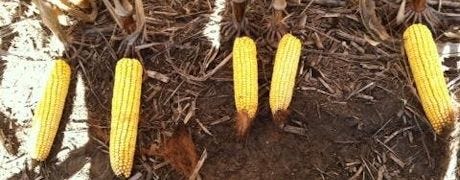January 26, 2014

By Kyle Allen
With winter weather blanketing the state with cold and snow, it is hard to keep our minds from imagining sitting in the tractor seat this upcoming spring planting season. Some of us are asking, "Where did 2013 go?" From a late planting season to a later harvest season, 2013 season is finally in the books.

PROBLEMS WITH THE PLANTER: Seed spacing can be a problem with seed meters are not properly cleaned and calibrated. Talk to a professional make adjustments before heading to the field this spring.
A good friend of mine has always said, "You get one chance a year to be successful in the field. That success always starts with your planter, the most important piece of machinery in your shed." Whether you agree with him or not, seed placement in your fields is one of the most important aspects of your farming operation. That seed placement begins with your meters and getting them calibrated, cleaned, maintained, and put back on that planter for a successful 2014 planting season.
Skips will cost you
In 2014, something as simple as calibrating your planter can affect your bottom line. We all know when walking fields we want that "picket-fence" look, meaning plants should be even and consistent. We cannot help but smile when it goes right. On the other hand, we sometimes scratch our heads wondering why we see doubles, skips, or even no seed at all.
While walking through a field this fall, I found a corn field in my area with a skip out. All across the field there was many doubles and skips, but I was more curious on the results of the ears on the corn plant. Research has shown that a properly calibrated meter can increase 4 bushels per acre when a finger style meter is properly calibrated. These types of meters are found in John Deere, Kinze, Great Plains, CNH, and White planters.
~~~PAGE_BREAK_HERE~~~
Calibration counts
The main question that many farmers ask is, "How often do I need to calibrate my meters on my planter?" It truly depends on each situation. If a planter is not properly calibrated, different conditions such as high planting speeds, cloddy soil, very small seed, or even rough seedbed can lead to less than desirable stands. Double check the belts in your meters, brushes, and even have your meters cleaned. Meters may need cleaning due to excess seed treatment or any other material that would limit seed flow through your planter. If you are unsure if your meters need to be calibrated, just take one meter in to the dealer to have it tested. This will give you the best idea of how your planter meter is functioning and if it needs any repair.
Results matter
Instead of wondering if your corn will come up or if you will have a "good enough" stand, lay out the ground work now for a successful planting season. Talk to your local seed representative or a professional to make adjustments to your planter meters. You can make the most of your seed investment through optimum seed spacing.
Asking a few questions and working with your machinery during the winter months will get you off to a great 2014 planting season. And the goal of a "picket-fence" corn stand will be within your reach.
Allen is owner of Allen Seed and Service where he scouts 3,500 acres of corn and 10,000 acres of soybeans annually. He writes from Hawk Point.
You May Also Like




